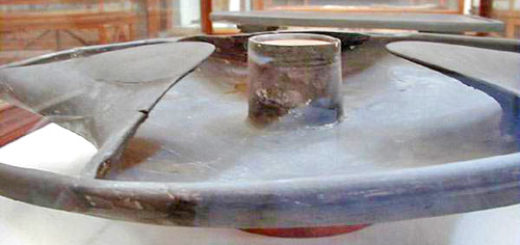‘Weird’ reptile with long snout that lived 200M years ago discovered in Alaska

The fossils of a “weird” and bizarre-looking new reptile species from 200 million years ago have been identified after they were first discovered in Alaska nearly a decade ago.
Known as thalattosaurus, the ancient sea reptile had an “extremely pointed snout” and grew to nearly 16 feet in length. They existed on the planet during the late Triassic period, roaming the seas for approximately 40 million years before they became extinct, according to researchers.
“Thalattosaurs were among the first groups of land-dwelling reptiles to readapt to life in the ocean,” the study’s co-author, Neil Kelley, said in a statement. “They thrived for tens of millions of years, but their fossils are relatively rare so this new specimen helps fill an important gap in the story of their evolution and eventual extinction.”
‘BONECRUSHING’ CROCODILE THAT HUNTED DINOSAURS 230M YEARS AGO DISCOVERED IN BRAZIL
The study’s lead author, Patrick Druckenmiller, said the newfound thalattosaurus species, Gunakadeit joseeae, is the most complete ever found in North America and provides new insights about the reptile’s family tree. “When you find a new species, one of the things you want to do is tell people where you think it fits in the family tree,” Druckenmiller said. “We decided to start from scratch on the family tree.”
In an interview with Live Science, Druckenmiller added the completeness of the skeleton makes him believe it’s “one of the last kind of thalattosaurs alive before they went extinct.”
The fossil was discovered in May 2011 by Jim Baichtal, a geologist with the U.S. Forest Service in Alaska’s Tongass National Forest, and his colleague, Gene Primaky.
‘BIZARRE’ TURTLE MANAGED TO SURVIVE ASTEROID THAT WIPED OUT DINOSAURS
This fossil of Gunakadeit joseeae was found in Southeast Alaska. About two-thirds of the tail had already eroded away when the fossil was discovered. (Credit: University of Alaska Museum of the
After excavating the skeleton, the researchers were able to tell almost instantly that this was a new species, because of the oddly shaped snout, which it may have used to hunt. “It was probably poking its pointy schnoz into cracks and crevices in coral reefs and feeding on soft-bodied critters,” Druckenmiller added, noting the specialization could have also led to its extinction.
“We think these animals were highly specialized to feed in the shallow water environments, but when the sea levels dropped and food sources changed, they had nowhere to go,” Druckenmiller said.
The study has been published in Scientific Reports.



 Creators of mankind
Creators of mankind Description of “Tall white aliens”
Description of “Tall white aliens” Where they came from?
Where they came from? About hostile civilizations
About hostile civilizations The war for the Earth
The war for the Earth “Tall white aliens” about eternal life
“Tall white aliens” about eternal life Video: “Nordic aliens”
Video: “Nordic aliens” Aliens
Aliens Alien encounters
Alien encounters The aliens base
The aliens base UFO
UFO Technology UFO
Technology UFO Underground civilization
Underground civilization Ancient alien artifacts
Ancient alien artifacts Military and UFO
Military and UFO Mysteries and hypotheses
Mysteries and hypotheses Scientific facts
Scientific facts


















